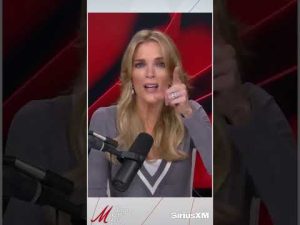In today’s intensely polarized political climate, the media’s role in shaping public perception is more critical than ever. This point is driven home by the recent coverage of political events and the reactions they sparked. The narrative spun by major media outlets often frames right-wing figures like Charlie Kirk and Donald Trump as polarizing figures without room for nuanced discussion. This portrayal not only influences public opinion but also fuels cultural tensions and deepens the divide between opposing political ideologies.
A concerning aspect of this media bias is its selective focus on the actions and protests of one side of the political spectrum. During the Tea Party years, any sign of extremism, even if rare, was magnified and latched onto by the media, painting the entire movement as radical. Yet, when similar or even more severe instances occur on the left, such as the aggressive and hostile reactions towards supporters of conservative figures, the coverage is either muted or entirely absent. This double standard not only skews the narrative but also escalates cultural anger, leaving those on the right feeling unfairly vilified and marginalized.
The impact of such biased coverage goes beyond mere dissatisfaction; it poses a real danger to the democratic process by inciting divisive and extremist behavior. When media narratives paint individuals as unequivocally racist or fascist without room for debate, it justifies extremist reactions against them. It fosters environments where violent and intolerant actions—like equating political figures to white supremacists—are not only tolerated but sometimes encouraged. This cycle of misinformation and reactionary behavior only threatens to deepen societal divides.
Moreover, the infiltration of these biased perspectives into educational institutions further exacerbates the issue. The indoctrination of young minds with one-sided viewpoints leads to a generation that might view dissenting opinions as inherently wrong or dangerous. The lack of balanced discussion and counterprogramming at home leaves children vulnerable to adopting hyper-partisan views, as seen in cases where protestors act with hostility and intolerance towards anyone that supports right-wing figures. It’s alarming to witness how this influences real-world actions, with disturbing incidents of effigies and signs equating political figures to historical villains.
As political tensions escalate, the need for genuine debate and reasoned discourse becomes clearer. While it is tempting to engage in confrontational tactics when faced with extreme viewpoints, the solution lies in steadfast commitment to democratic processes and the power of rational argument. Those on the right must continue to challenge the dominant narratives, exposing the logical fallacies and inconsistencies in the arguments made against them. While changing entrenched worldviews can be a daunting task, the key to fostering a healthier political environment is to persistently advocate for free speech and reasoned engagement. To this end, it remains vital not only to defend one’s own beliefs but also to engage sincerely with contrasting viewpoints in pursuit of mutual understanding and respect.







